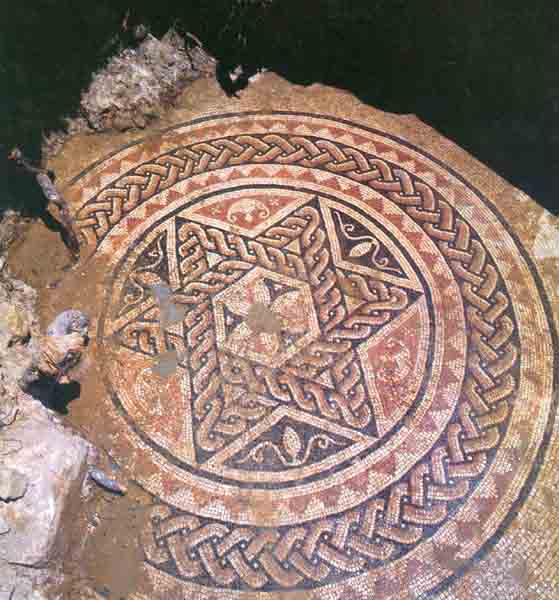Image Details

Zev Radovan
A “shield of David,” magen David in Hebrew, dominates the center of the mosaic poor in the circular room of the lower bathhouse at Ein Yael. Formed of a double twisted rope pattern and surrounded by a triple braid rope pattern, the hexagram emerged during the 1988 excavations of the Roman villa at the site.
As a design—two equilateral triangles sharing a common center and pointing in opposite direction—the shield of David dates from at least the Bronze Age, when it was used, perhaps as an ornament or as a magical sign, by many civilizations. Its first certain appearance in a Jewish context is on a seal from the seventh century B.C. Both Jews and non-Jews frequently used the symbol for decorative purposes during the Second Temple period and continued to do so into the Middle Ages. The origin of the association with David is unclear. Among the Arabs, who used it for magical purposes, the symbol was known as the Seal of Solomon. The widespread use of the shield of David as an emblem of Judaism did not occur until the 19th century.
